Corn is a popular vegetable to grow in small gardens. It is easy to grow and can be used in many dishes. In this guide, we will answer some of the most common questions about growing corn in a small garden.
We will provide tips on how to choose the right variety of corn, how to plant it, and how to care for it. Let’s get started!
How to Grow Corn in a Tiny Garden?
If you’re lucky enough to have a small bit of land to call your own, you might be wondering how to grow corn in a small garden.
With just a few hours of work, you can have fresh corn on the cob all summer long!Here are a few tips to get you started:
- Choose a sunny spot in your garden for your corn plants. They need at least six hours of sunlight each day to thrive.
- Corn is a heavy feeder, so make sure to amend your soil with compost or manure before planting. This will give the plants the nutrients they need to grow tall and strong.
- Sow your seeds about an inch deep in the soil, and space them about a foot apart. Once they germinate, thin the plants so that there are only one or two per pot.
- Water your corn regularly, especially during dry periods. The plants will need about an inch of water per week.
- When the plants are about six inches tall, apply a layer of mulch around them to help retain moisture and keep weeds at bay. [1]
Quick Guide to Growing Corn
If you’re looking to add corn to your small garden, there are a few things you’ll need to take into account. Here’s a quick guide to growing corn in a small garden:
- Pick the right variety of corn for your space. There are many different types of corn, and some varieties grow better in small spaces than others. Choose a smaller variety, such as ‘Sugar Buns’ or ‘Pixie’, for your garden.
- Make sure you have enough space. Corn needs room to grow, so make sure you have at least four square feet per plant.
- Plant in blocks of at least four plants. This will ensure that the corn has enough room to pollinate and produce ears of corn.
- Fertilise regularly. Corn is a heavy feeder, so you’ll need to fertilise your plants every two weeks or so. Choose a fertiliser high in nitrogen for best results.
- Water regularly. Corn needs a lot of water, so make sure to water your plants deeply and regularly.
- Stake tall varieties of corn. Some types of corn can grow quite tall, so you may need to stake them to keep them from falling over.
- Harvest when the ears are ripe. You’ll know the ears are ready to harvest when the husks are dry and the kernels are plump.
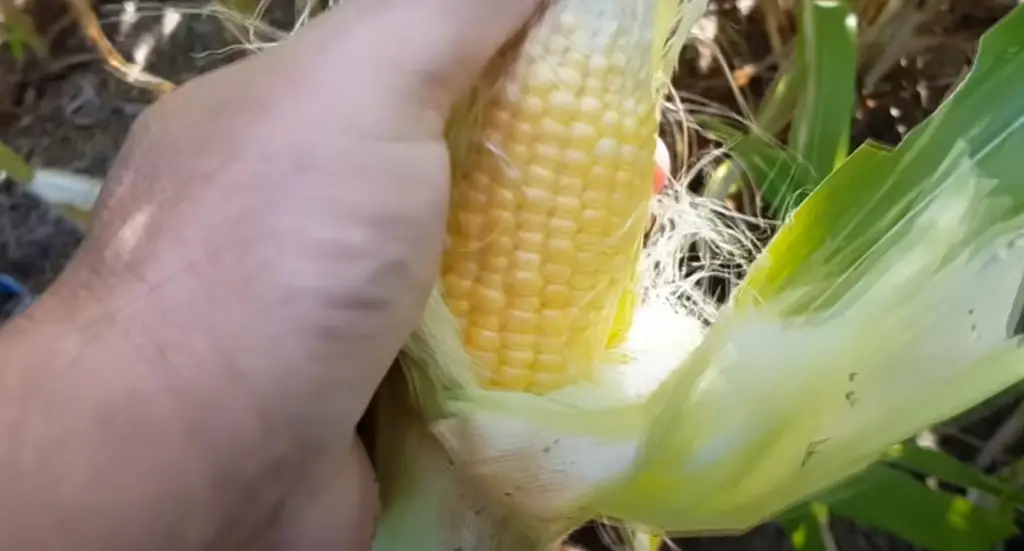
With a little care, you can successfully grow corn in a small garden.
With a little effort, you’ll be rewarded with delicious ears of fresh corn. [2]Soil, Planting, and Care
One of the most important things to consider when growing corn is the quality of your soil. The plants need lots of nutrients to grow, so make sure you use a high-quality fertiliser. You should also till the soil well before planting to help it get air.
When you plant the seeds, you will want to space them about 12 inches apart. You can plant them directly in the ground or start them indoors in seedling trays. If you start them indoors, be sure to harden them off before transplanting them outdoors.
Once you plant the corn, water it well and keep the soil moist. Corn needs a lot of water and food, so you will need to fertilise it a few times during the season. When the corn is about knee-high, apply compost or manure to its side.
The ears of corn will be ready to harvest when the husks are brown and dry. Carefully remove the husks and check to see if the kernels are plump and full. If so, then it is time to harvest.[2]
Troubleshooting
If you’re having trouble growing corn in your small garden, there are a few things you can do.
First, make sure that the seeds are planted correctly. They should be planted about an inch deep in the soil, and they should be spaced about six inches apart.
Another common problem for small gardens is pests. Birds, squirrels, and other animals can all be a problem. One way to keep them away is to use scarecrows or wind chimes. You can also try using nets or fences to keep the animals out.
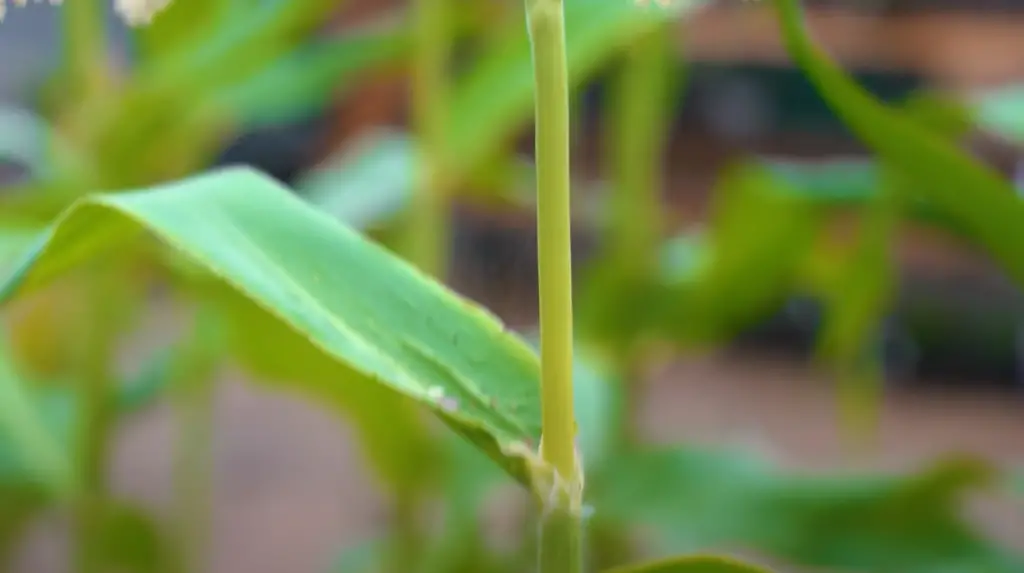
If you are having trouble growing corn in your small garden, you can contact a gardening expert. They will be able to help you figure out what the problem is and give you more specific advice. [2]
Harvest and Storage
Successfully growing corn is only half the battle. You also need to know when to harvest it and how to store it properly.
The ears of corn are ready to harvest when the husks are brown and dry. The kernels will be plump and milky. To check if the kernels are milky, pierce one with your fingernail.
If milky liquid squirts out, it’s time to harvest. If watery liquid or nothing at all comes out, the ear isn’t quite ready yet. To harvest, cut the stalk of the corn an inch below the ear with a sharp knife. Be careful not to damage the ear while you’re doing this.
After you’ve harvested your corn, it’s important to store it properly.
If you don’t have a root cellar or basement, you can also store husked ears of corn in the fridge. Just make sure to wrap them tightly in plastic first.
With proper storage, your corn will stay fresh for several months. [2]
Best Companion Plants for Corn
Just like people, plants can be shy or outgoing, introverted or extroverted. And just like with people, you want to choose your corn’s friends wisely. You don’t want to put the life of the party next to a wallflower — they’ll never get talked to!
The same goes for plants. You want to choose companions that will enhance each other’s growth, not stunt it.
The best plants to companion with corn are:
- Beans and corn love each other. The two together make what is called the “three sisters” in Native American lore, and for good reason! They benefit each other in many ways. The beans climb the corn stalks, and the corn provides a natural support for the beans. The beans also add nitrogen to the soil, which benefits both plants.
- Cucumbers are another good plant to companion with corn. They benefit from the shade that the corn stalks provide, and they also help to keep the soil moist.
- Melons benefit from the shade provided by the corn stalks. They also help to keep the soil moist.
- Squash is another good plant to accompany corn. Like beans, squash add nitrogen to the soil. They also help to keep the weeds down.
- Peppers benefit from the shade provided by the corn stalks. They also help to keep the soil moist.
Getting Started with Corn: Direct Sowing or Transplants?
There are two ways to start growing corn: direct sowing or transplants.
- Direct sowing is when you sow the seeds directly in the ground where they will grow.
- Transplants are when you start the seeds indoors and then transplant them outdoors later.
If you live in an area where the growing season is long, then you should directly sow your corn seeds. This means planting them directly in the ground when the soil has warmed to around 60 degrees Fahrenheit.
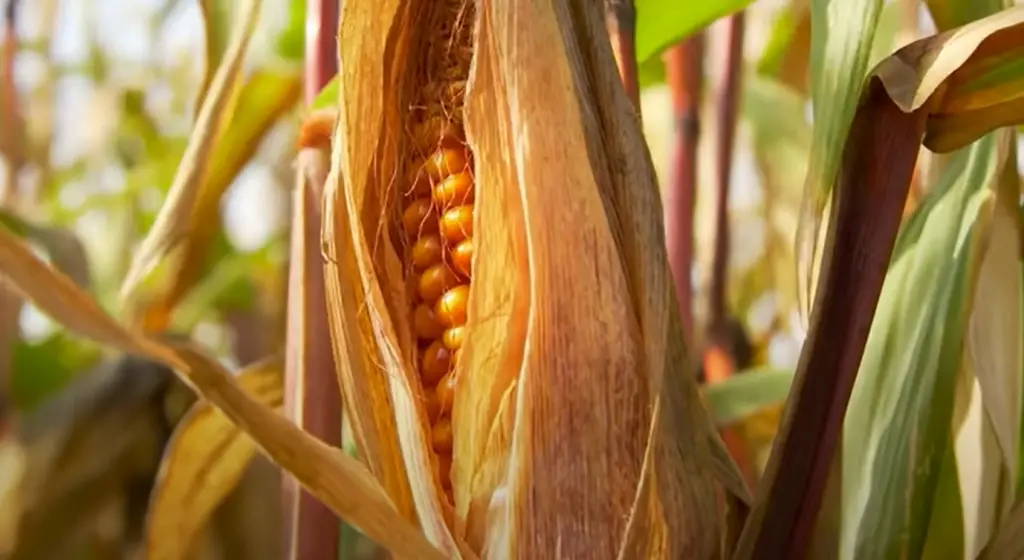
If you live in an area with a shorter growing season, then transplants are the best option. Corn seeds should be started indoors about six weeks before the last frost date.
Tips for Growing Corn in Small Places
If you have a small garden, or even just a large container, you can still grow corn! Here are a few tips to get the most out of your space:
- Choose a smaller variety of corn. There are many varieties that stay shorter and don’t need as much room to spread out.
- Plant corn in blocks rather than rows. This will help the plants support each other and keep them from falling over.
- Stake the corn plants or build a small fence around them to keep the ears off the ground. [3]
FAQ
What is the Trick to Growing Corn?
There is no one trick to growing corn. However, some things that can help include making sure the soil is loose and well-drained, planting the seeds in hills or mounds (rather than rows), and using a fertiliser high in nitrogen.
Additionally, corn plants need a lot of water – so make sure to water them regularly!
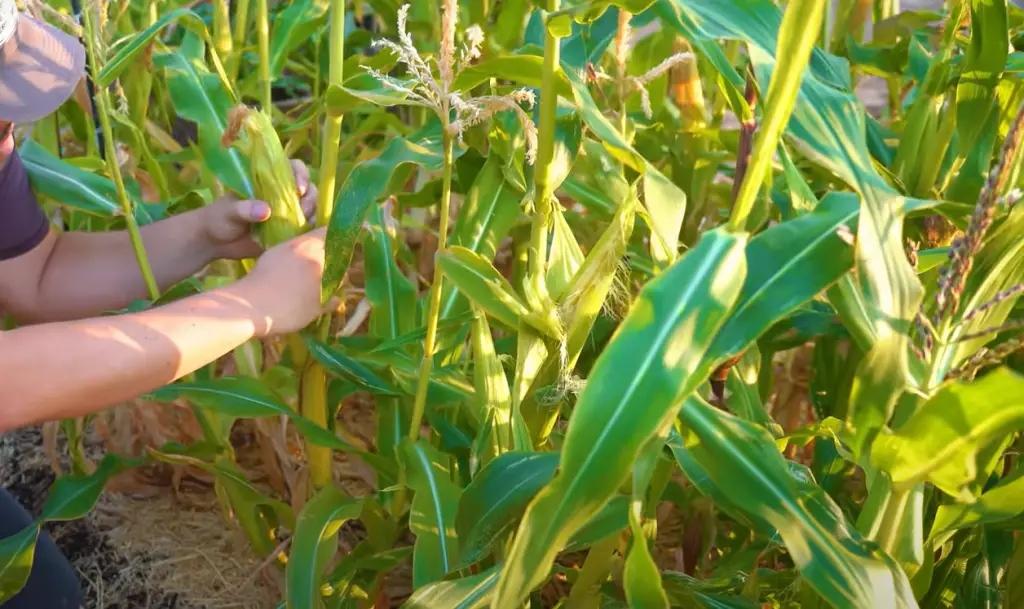
Corn is a wind-pollinated plant, which means that the pollen from the male flowers (the tassels) needs to travel to the female flowers (the silks) in order for fertilisation to occur. If your plants are too close together, this process can be hindered. So, make sure to give your corn plants plenty of space!
Finally, don’t forget to harvest the ears of corn when they’re ripe. You can tell they’re ready by checking the silks – if they’ve turned brown and begun to dry out, the ear is probably ready to be picked.
How Long Does Corn Take to Grow?
Corn typically takes around 70-100 days to fully mature, depending on the variety. Early and midseason varieties will mature faster than full season ones.
To ensure a good harvest, make sure to start planting early in the season so that the corn has enough time to grow. If you plant too late in the season, the corn may not have enough time to mature and you will end up with a smaller harvest.
You can plant corn in the spring when the soil has thawed and it is warm enough outside. You can also start your seeds indoors in pots to get a head start on the growing season.
Corn needs to be watered regularly. It takes a lot of water, so you will need to give it around an inch per week. Try watering the corn in the morning so that the leaves have time to dry out before nightfall. That way, you can help prevent diseases from spreading.
If you want to grow corn in a small space, you can try planting it in rows or hills. Rows are the traditional method and will give you the most even results. If you are limited on space, try planting your corn in hills. This method will allow you to plant more corn in a smaller area.
Can You Grow Corn in a Raised Bed?
Yes, you can grow corn in a raised bed. You will need to make sure the raised bed is deep enough and has good drainage. You may also want to consider adding some compost to the soil to help the corn plants grow.
If you are growing corn in a small space, you may want to try growing it in a container. Make sure the container is large enough and has good drainage. You may also want to consider adding some compost to the soil to help the corn plants grow.
Do You Have to Plant 2 Rows of Corn?
No, you don’t have to plant two rows of corn. In fact, you can get away with planting just one row of corn if you have a small garden. The main thing is to make sure that the corn is planted in a sunny spot and that the soil is loose and well-drained.
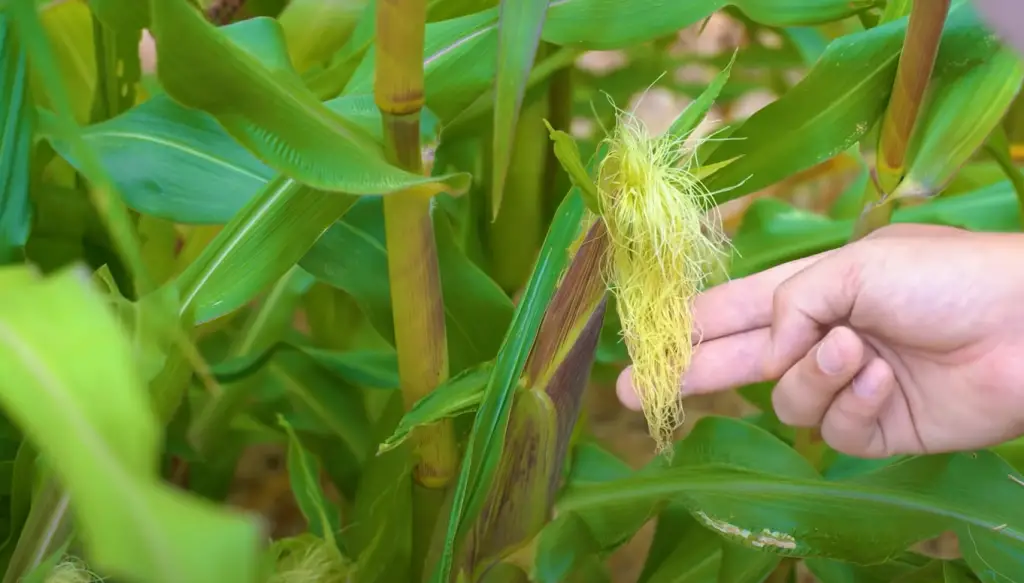
Corn also needs room to grow, so make sure to plant it in a spot where it won’t be crowded by other plants.
If you do decide to plant two rows of corn, keep in mind that the ears of corn will be smaller if the plants are spaced closer together. So, if you’re looking for larger ears of corn, space the plants further apart.
How Many Corn Seeds Do You Plant in Each Hole?
You should plant two to three corn seeds per hole. If all of the seeds germinate, you can thin out the seedlings so that only the strongest one remains in each hole.
When Should You Plant Corn?
You should plant corn when the soil is warm, which is typically two to three weeks after the last frost in spring. The ideal soil temperature for corn germination is between 70°F and 95°F.
How Deep Do Raised Beds Need to Be for Corn?
At least 12 inches deep, but 18 inches is even better. This allows the roots to develop fully and anchor the plant so it doesn’t fall over when it gets big and heavy with ears of corn.
If you have really sandy soil, you might want to make your beds even deeper – up to 24 inches. This will help hold moisture better and give the roots a more hospitable environment.
If you have clay-rich soil, you might be able to get away with making your beds only six inches deep. This is because clay holds moisture well and doesn’t allow roots to penetrate deeply anyway. Just make sure that the top six inches of your bed are loose so the plants can put down roots easily.
If you’re not sure how deep to make your beds, err on the side of deeper rather than shallower. It’s better for the corn plants to have too much room to grow than not enough.
Useful Video: 5 Tips How to Grow a Ton of Sweetcorn in One Raised Garden Bed or Container
Conclusion
If you have been considering growing corn in your garden this year, we hope the tips and information provided here has helped you make a decision. Growing corn can be a fun and rewarding experience, but it is important to remember that there are some things to consider before planting.
If you follow the guidelines provided, you can grow a healthy and bountiful crop of sweet corn in your backyard!
Have you ever grown corn in your garden? What tips would you add to this guide? Let us know in the comments below!
References:
- https://vegogarden.com/apps/faq
- https://plantbasedonabudget.com/the-best-raised-garden-bed-why-i-chose-vego-garden/





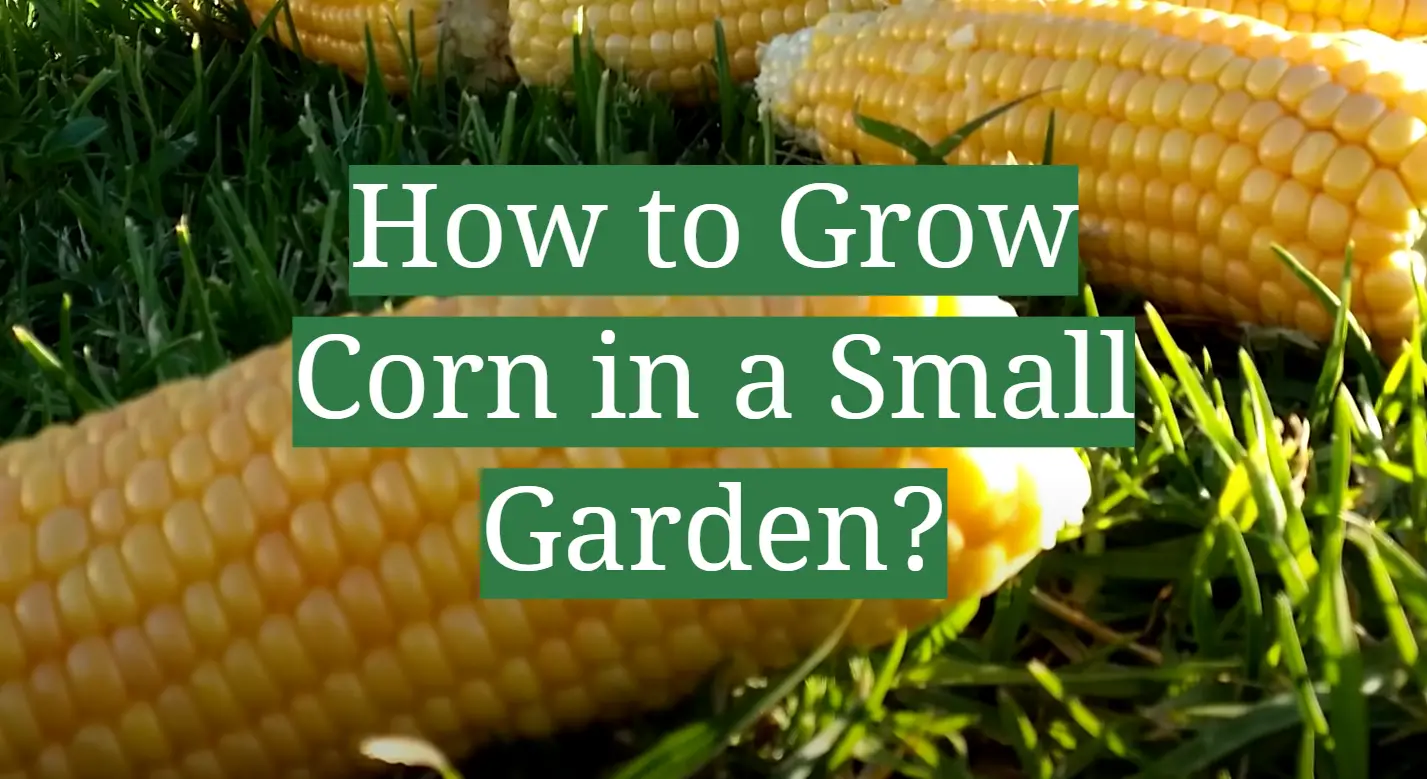




Leave a Reply
View Comments